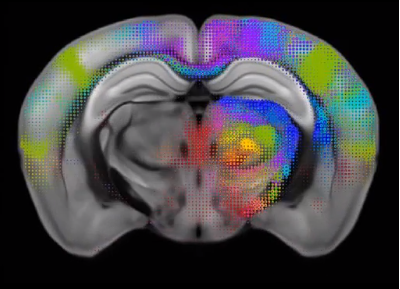New Brain Diagram Promises Fresh Insights Into Gene Activity That Contributes To Psychiatric Disorders

A new world-first in mapping the brain promises fresh insights into the workings of the central nervous system.
Scientists at the Allen Institute for Brain Science on Tuesday described the massive new dataset — freely available online — in the journal Nature.
"Understanding how the brain is wired is among the most crucial steps to understanding how the brain encodes information," Hongkui Zeng, the group’s research director, said in a statement. "The Allen Mouse Brain Connectivity Atlas is a standardized, quantitative, and comprehensive resource that will stimulate exciting investigations around the entire neuroscience community, and from which we have already gleaned unprecedented details into how structures are connected inside the brain."
The researchers used that data to demonstrate the existence of highly specialized patterns of connectivity among various regions of the brain. They found that connections may vary in strength by as much as five orders of magnitudes, complemented by greater quantities of weaker connections.
After four years of work, Zeng and her colleagues say they’ve developed a wiring diagram known as a “connectome,” which depicts short- and long-range connections using genetically engineered tracer viruses used to illuminate individual neurons — similar to tracer fire from military weapons, intended solely for tracking purposes. In developing the diagram, the researchers used imaging data collected from the brains of 1,700 laboratory mice, at resolutions smaller than a micrometer.
"The data for the Allen Mouse Brain Connectivity Atlas was collected in a way that's never been done before," Zeng said. "Standardizing the data generation process allowed us to create a 3D common reference space, meaning we could put the data from all of our thousands of experiments next to each other and compare them all in a highly quantitative way at the same time."
The research team released the last major update to the atlas last month after publishing earlier drafts on a regular basis since November 2011. The new research tool not only describes the presence of connectivity but its relative strength. "The purpose of the Atlas is to create a new way to map the brain's vast connections systematically and rapidly, and to develop a platform to present the data to users and help them navigate in the friendliest possible way," Zeng said. "But the kind of analysis we have done so far is just the beginning of the deep analysis of the wiring patterns of different brain circuits made possible by this unique collection of data."
Now, scientists from around the world will update the atlas on a continual basis, providing an enduring research tool, according to Ed Callaway, a professor at the Salk Institute for Biological Studies. "Previously, the scientific community had to rely on incomplete, fragmented data sets, like small pieces of a map but at different scales and resolutions, so it was impossible to see the bigger picture,” Callaway said. "Now, we have instant access to complete and consistent data across the entire brain, and the suite of web-based analytic and display tools make it easy to find what you need and to see it in 3D.”
The new tool promises great insights into brain responses to the pathogenesis of varying diseases, Callaway said. "Who you are — all your thoughts and actions your entire life — is based on connections between neurons.”
Source: Zeng H, Oh SW, Harris JA, et al. A mesoscale connectome of the mouse brain. Nature. 2014.



























